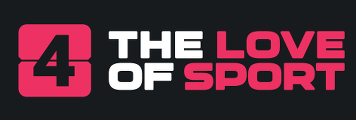On 21 September South Africa became the twelfth and last nation to publish their World Cup squad. The newcomers, Fijiana, just got in ahead of them.
The pair join those few who were able to welcome the twelve-month delay caused by the pandemic. It gave the coaches much needed time to close the gap on teams far more used to international competition. Many of the latter were appalled by the delay.
The gap will remain extreme.
It is most obvious in the make up of the Fijian 32. They become the only squad to offer only 15 forwards to complement the 17 backs. That neatly matches Fijian preferences: sevens has always been king in those islands, and spectators can look forward to some dazzling handling. The problem is evident: how are the forwards going to ensure a regular supply of ball for their backs?
Still, a very first RWC for Fiji opens new horizons. The gold medals they are able to win at top 7s tournaments will be far from their grasp. For their administrators and World Rugby the hope must be that their mere presence in Aotearoa will be a launch-pad for greater things in 15s.
Statistic: Fiji currently rank 21st in the world. In 2017 Hong Kong were the outsiders, ranked 23rd. They suffered some massive defeats.
The Boks aren’t new to RWCs, but they haven’t appeared since 2014. They face two distinctly tough encounters against England and France, but for them the contest against Fijiana will be the proving ground. There, their wider experience of test matches should stand them in good stead. The power of their forwards’ game may prove decisive.
Power Ratios
Perhaps it was inevitable. With the new generous number of 32 players allowed per squad, selectors were bound to disagree over the forwards/backs split.
As things stand, the outer limits of variation are marked at 19/13 (several nations) and Fiji 15/17. We can only hope that no calls need to go out for last-minute replacements. Of the 12 nations involved only very few, led by Australia and Fiji, could reasonably hope to fly reinforcements in.
7s v 15s
One fascinating detail that refuses to go away; the presence of top 7s players in the twelve groups, led by the starry Sharni Williams and Shannon Parry (Australia), both Olympic gold medallists. How big a mark will they be able to make over the five weeks of competition?
The need to include them in national 15s squads is an indication of talent shortage. The pandemic too must bear responsibility for the clash. It was never intended that the two World Cups (7s in Cape Town and 15s in Auckland) should fall so close together.
So we’ll keep a close eye on how they survive the challenge.
Officials
WR has published details of the officials to take charge of all the pool matches. There is plenty of experience on show there. Even the southern hemisphere and New World refs have been offered as many tests as possible to bring them up to speed.
The real news will come when similar lists are published for the succeeding knock-out games. Then we will discover who has really caught the eye of Alhambra Nievas and her colleagues who have the final say.









